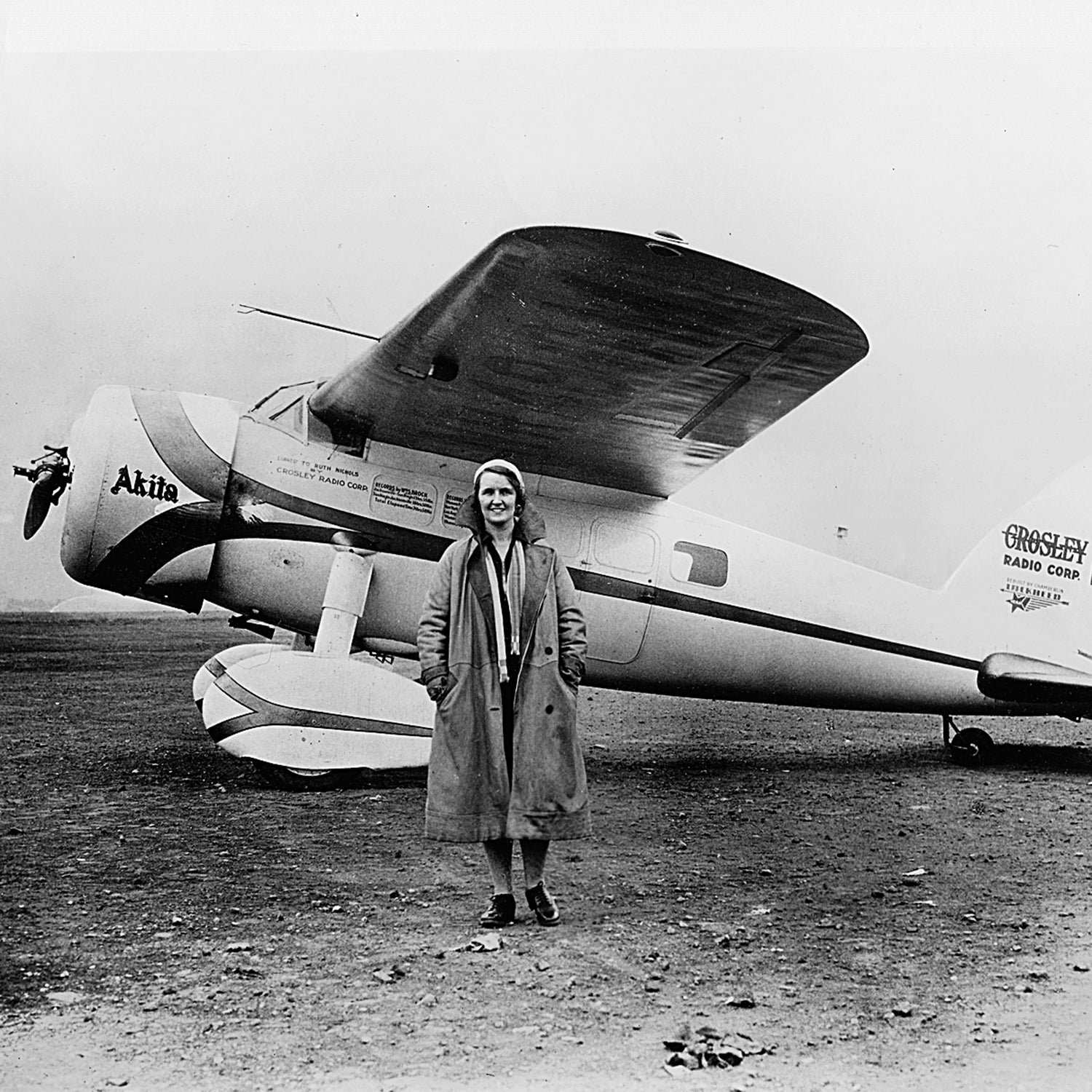Amelia Earhart wasn’t the only female aviator storming the skies in rickety open-cockpit planes in the 1920s. In 1928, fewer than a dozen American women held pilot’s licenses, but a small, scrappy group of them was determined to change the face of flying. These women pilots notched new speed and distance records, executed daring theatrics in airborne races, and stunned the press with their feats of survival, performing midair repairs and leaping out of fiery crashes.
“It would have been impossible to be a child growing up in America [in the late 1920s and ’30s] and open your newspaper every day or hear your radio programs every night and not hear the stories of these women,” says Keith O’Brien, author of the new book . “They were huge stars. Actually, that word doesn’t do them justice. They were icons.”
At the time, airplanes were made of wood and fabric, and flying was notoriously hazardous. It was common for the machines to malfunction in the air, and pilots frequently died in bone-splintering wrecks, especially in distance-flying competitions and air races around pylons. Like many other physically challenging fields, it was deemed no place for a woman.
In Fly Girls, O’Brien tells the stories of five pioneering women pilots—Amelia Earhart, Ruth Elder, Florence Klingensmith, Ruth Nichols, and Louise Thaden—who joined forces to fight for the right to race against men and, in some of the most prestigious races, even beat them. We caught up with O’Brien, a New Hampshire–based journalist and NPR contributor, about how he uncovered these women’s long-forgotten stories.
OUTSIDE: Air racing was as popular as baseball and boxing in the late 1920s and ’30s. What was it like?
KEITH O’BRIEN: Air racing was a real sport—it had winners, losers, massive jackpots of money for the victors, and enormous crowds. The best thing I can compare it to today is the Super Bowl. The events would draw 100,000 paying fans in a single day, and another 100,000 would watch for free from the hoods of their automobiles parked on nearby highways.
It was also extremely dangerous. Inevitably, pilots flying open-cockpit, single-propeller planes at a high rate of speed low to the ground would crash—and they would sometimes die right there in front of the grandstands. And yet the show would go on, the races would continue. They were like gladiators.
Women pilots flew in these races and united for the opportunity to compete against men. How hard was it for them?
The thing that sticks out to me is the double standard. Men crashed all the time in daring record-breaking flights and in the air races. And when they did, the press lauded them for the effort. When a woman crashed in a daring record-breaking flight or in the air races, as inevitably she would, the press was there to criticize her for failing. When men died in the air races—and inevitably they did—they were often given grand tributes right there on the airfield, sometimes the very same weekend, with fly-bys and 21-gun salutes and their ashes scattered from a plane while people bowed their heads in silence. When women died in the air races, they sometimes weren’t given the most basic decent human respect.
These women faced tremendous injustice. How did writing this book make you feel?
It made me really angry that these women risked everything—and, at times, lost everything—in the pursuit of the thing they wanted to do, the thing they loved. And for those risks, for those sacrifices, they were criticized, doubted, and marginalized. At times, they were disrespected in ways that blew my mind. And then we forgot them. In our quest to remember one great woman, Amelia Earhart, we forgot all the others…I think it would really upset Amelia that her friends and colleagues have been erased.
I confess that I hadn’t heard of any of the pilots except Amelia Earhart before reading your book.
When you reduce the story to Amelia Earhart flying alone—flying solo against an angry headwind—it gives you the sense that only one woman had the power, the tenacity, or the grit to break through. And the truth is there were lots of them. They were at times jousting with one another in the sky to get ahead and to win races or to beat each other across the ocean. To me, that’s a much more interesting story and a much more inspiring story. Amelia Earhart was part of this small but scrappy squadron that was willing to fly through anything.
In your book, you write about the challenges but also edge-of-your-seat triumphs. How did these women succeed in the face of so much discrimination? Did they share certain traits?
On the face of it, they are different. Some came from money, some didn’t. Some were educated, some weren’t. But I was able to find a few commonalities that I think are pretty important. The first thing is they were all different from a young age, and they knew it—even when they were girls.
The other thing I would say is they were what we would today call early adopters. At a time when a great many people still feared flying and still questioned whether planes were really going to work out as a mode of transportation, all of these women not only flew, but predicted that flying was the future.
The last thing they shared was how they were raised. Their parents were different. Their fathers were everything from farmers to Wall Street traders. But at a time when parents could tell children—in particular young girls—what they could or could not do, or what passions they could or could not pursue, the parents in each of these families either passively approved of their daughters’ unusual interest in aviation (by turning the other way) or actively encouraged it. They bought them lessons to learn how to fly or bought them rides on airplanes when they were still quite young. That’s important. As a parent, that’s something I’ve learned—to let your child wear dresses or pants if they want to or wear their hair short or long. Let them follow their own path, because you never know where it’s going to lead.
How do you hope this book will affect readers?
One question that I’ve gotten in recent weeks is what do you hope young girls take away from this story, and that’s a valid question. But it’s also a telling one, because my hope is not that young girls take away something from this story; I hope everyone takes something away from this story. Boys and men need to know that women can be powerful heroes and can be just as tough, just as fearless as the men, and triumph in the end. To me, that’s a story for everybody.


